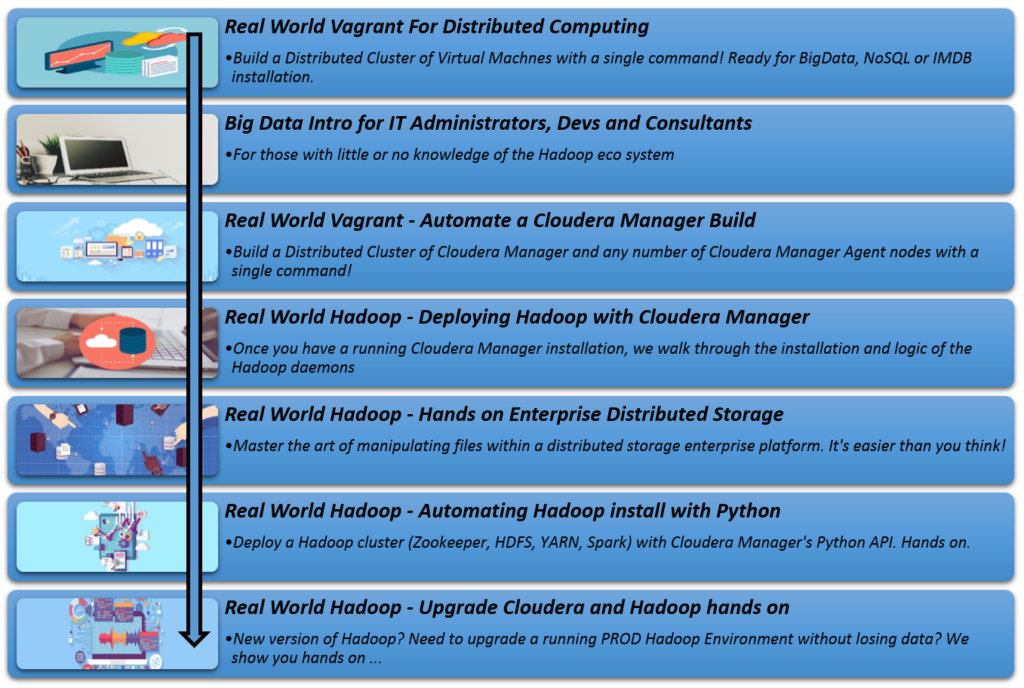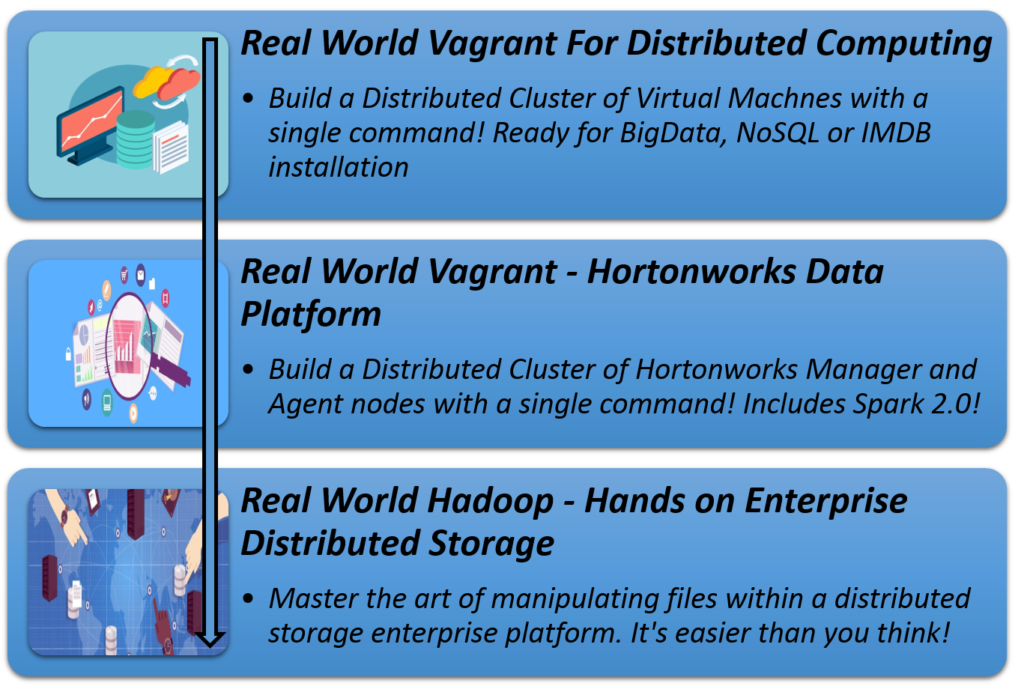Real World Spark 2 – Spark Core Overview

Why you should take a look at Spark 2. The easiest, open source, modern cluster computation engine to write code against
Course Access
You can access all the Big Data / Spark courses for one low monthly fee. Currently the membership site houses courses that covers deploying Hadoop with Cloudera and Hortonworks as well as installing and working with Spark 2.0.
- POC-d membership site : POC-D Membership site
This course can be purchased from
Why Apache Spark …
Apache Spark run programs up to 100x faster than Hadoop MapReduce in memory, or 10x faster on disk. Apache Spark has an advanced DAG execution engine that supports cyclic data flow and in-memory computing. Apache Spark offers over 80 high-level operators that make it easy to build parallel apps. And you can use it interactively from the Scala, Python and R shells. Apache Spark can combine SQL, streaming, and complex analytics.
Apache Spark powers a stack of libraries including SQL and DataFrames, MLlib for machine learning, GraphX, and Spark Streaming. You can combine these libraries seamlessly in the same application.
Spark Overview
Apache Spark is a fast and general-purpose cluster computing system. It provides high-level APIs in Java, Scala, Python and R, and an optimized engine that supports general execution graphs. It also supports a rich set of higher-level tools including Spark SQL for SQL and structured data processing, MLlib for machine learning, GraphX for graph processing, and Spark Streaming.
Jupyter Notebook
Jupyter Notebook is a system similar to Mathematica that allows you to create “executable documents”. Notebooks integrate formatted text (Markdown), executable code (Scala),
The Jupyter Notebook is a web application that allows you to create and share documents that contain live code, equations, visualizations and explanatory text. Uses include: data cleaning and transformation, numerical simulation, statistical modeling, machine learning and much more.
The Jupyter Notebook is based on a set of open standards for interactive computing. Think HTML and CSS for interactive computing on the web. These open standards can be leveraged by third party developers to build customized applications with embedded interactive computing.
Spark shell
Spark’s shell provides a simple way to learn the API, as well as a powerful tool to analyze data interactively. It is available in either Scala (which runs on the Java VM and is thus a good way to use existing Java libraries) or Python.
ScalaIDE
Scala IDE provides advanced editing and debugging support for the development of pure Scala and mixed Scala-Java applications.
Spark Monitoring and Instrumentation
Every SparkContext launches a web UI, by default on port 4040, that displays useful information about the application. This includes:
A list of scheduler stages and tasks A summary of RDD sizes and memory usage Environmental information. Information about the running executors
Recommended Spark course path. If you already have spark installed, you do not need to access the first three courses






